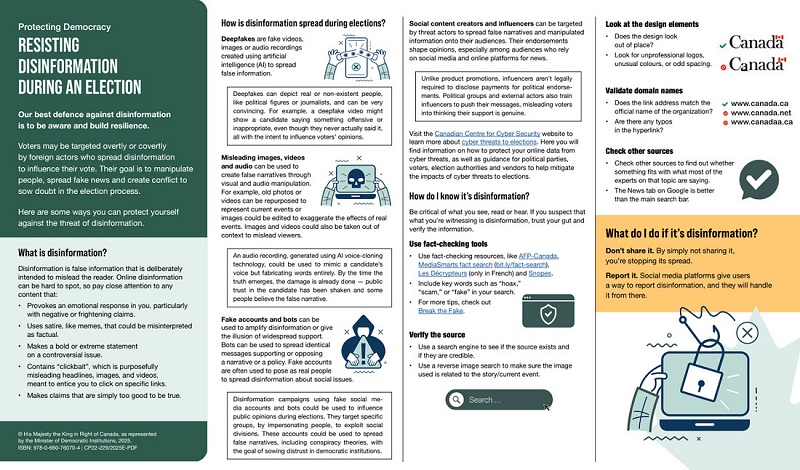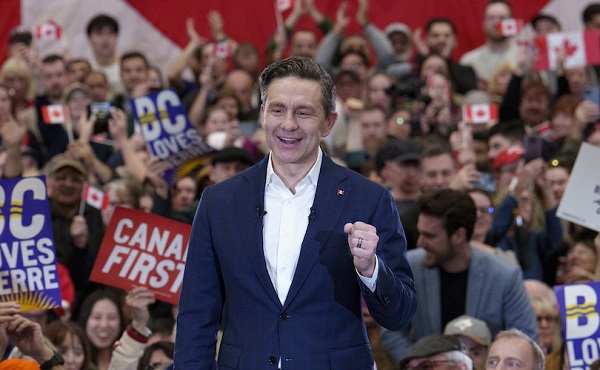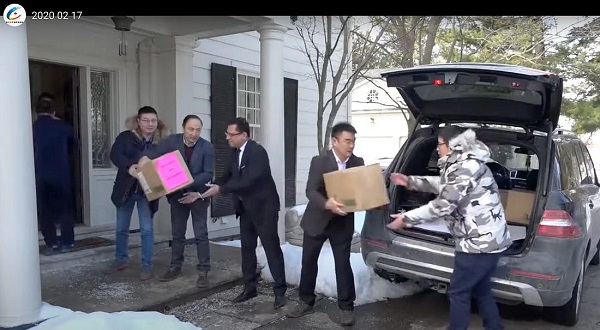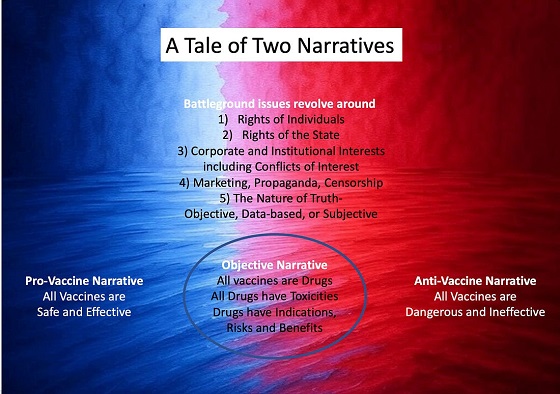2025 Federal Election
ASK YOURSELF! – Can Canada Endure, or Afford the Economic Stagnation of Carney’s Costly Climate Vision?

From Energy Now
By Tammy Nemeth and Ron Wallace
Carney’s Costly Climate Vision Risks Another “Lost Liberal Decade”
A carbon border tax isn’t the simple offset it’s made out to be—it’s a complex regulatory quagmire poised to reshape Canada’s economy and trade. In its final days, the Trudeau government made commitments to mandate climate disclosures, preserve carbon taxes (both consumer and industrial) and advance a Carbon Border Adjustment Mechanism (CBAM). Newly minted Prime Minister Mark Carney, the godfather of climate finance, has embraced and pledged to accelerate these commitments, particularly the CBAM. Marketed as a strategic shift to bolster trade with the European Union (EU) and reduce reliance on the U.S., a CBAM appears straightforward: pay a domestic carbon price, or face an EU import fee. But the reality is far more extensive and invasive. Beyond the carbon tariffs, it demands rigorous emissions accounting, third-party verification and a crushing compliance burden.
Although it has been little debated, Carney’s proposed climate plan would transform and further undermine Canadian businesses and the economy. Contrary to Carney’s remarks in mid-March, the only jurisdiction that has implemented a CBAM is the EU, with implementation not set until 2026. Meanwhile, the UK plans to implement a CBAM for 1 January 2027. In spite of Carney’s assertion that such a mechanism will be needed for trade with emerging Asian markets, the only Asian country that has released a possible plan for a CBAM is Taiwan. Thus, a Canadian CBAM would only align Canada with the EU and possibly the UK – assuming that those policies are implemented in face of the Trump Administrations’ turbulent tariff policies.
With the first phase of the EU’s CBAM, exporters of cement, iron and steel, aluminum, fertiliser, electricity and hydrogen must have paid a domestic carbon tax or the EU will charge more for those imports. But it’s much more than that. Even if exporting companies have a domestic carbon tax, they will still have to monitor, account for, and verify their CO2 emissions to certify the price they have paid domestically in order to trade with the EU. The purported goal is to reduce so-called “carbon leakage” which makes imports from emission-intensive sectors more costly in favour of products with fewer emissions. Hence, the EU’s CBAM is effectively a CO2 emissions importation tariff equivalent to what would be paid by companies if the products were produced under the EU’s carbon pricing rules under their Emissions Trading System (ETS).
While that may sound simple enough, in practice the EU’s CBAM represents a significant expansion of government involvement with a new layer of bureaucracy. The EU system will require corporate emissions accounting of the direct and indirect emissions of production processes to calculate the embedded emissions. This type of emissions accounting is a central component of climate disclosures like those released by the Canadian Sustainability Standards Board.
Hence, the CBAM isn’t just a tariff: It’s a system for continuous emissions monitoring and verification. Unlike traditional tariffs tied to product value, the CBAM requires companies exporting to the EU to track embedded emissions and submit verified data to secure an EU-accredited verification. Piling complexity atop cost, importers must then file a CBAM declaration, reviewed and certified by an EU regulatory body, before obtaining an import certificate.
This system offers little discernible benefit for the environment. The CBAM ignores broader environmental regulatory efforts, fixating solely on taxation of embedded emissions. For Canadian exporters, Carney’s plan would impose an expensive, intricate web of compliance monitoring, verification and fees accompanied by uncertain administrative penalties.
Hence, any serious pivot to the EU to offset trade restrictions in the U.S. will require a transformation of Canada’s economy, one with a questionable return on investment. Carney’s plan to diversify and accelerate trade with the EU, whose economies are increasingly shackled with burdensome climate-related policies, ignores the potential of successful trade negotiations with the U.S., India or emerging Asian countries. The U.S., our largest and most significant trading partner, has abandoned the Paris Climate Agreement, ceased defence of its climate-disclosure rule and will undoubtedly be seeking fewer, not more, climate-related tariffs. Meanwhile, despite rulings from the Supreme Court of Canada, Carney has doubled down on his support for the Trudeau governments’ Impact Assessment Act (Bill C-69) and confirmed intentions to proceed with an emissions cap on oil and gas production. Carney’s continuance of the Trudeau governments’ regulatory agenda combined with new, proposed trade policies will take Canada in directions not conducive to future economic growth or to furthering trade agreements with the U.S.
Canadians need to carefully consider whether or not Canada can endure, or afford, Carney’s costly climate vision that risks another “lost Liberal decade” of economic stagnation?
Tammy Nemeth is a U.K.-based strategic energy analyst.
Ron Wallace is an executive fellow of the Canadian Global Affairs Institute and the Canada West Foundation.
2025 Federal Election
AI-Driven Election Interference from China, Russia, and Iran Expected, Canadian Security Officials Warn

 Sam Cooper
Sam Cooper
Canada’s election monitoring agency is warning that foreign powers, led by the People’s Republic of China, are expected to target Canadian politicians and political parties in the coming weeks using increasingly convincing AI-generated cyberattacks—part of a broad set of malign strategies that could be impacting the 2025 federal election.
The warning came Monday from the Security and Intelligence Threats to Elections (SITE) Task Force, whose officials detailed how foreign state actors, including China, Russia, and Iran, are likely to use so-called “hack-and-leak” operations, generative AI, and social engineering to undermine confidence in Canada’s democratic process.
“Canadian politicians and political parties are likely to be targeted by threat actors attempting to hack into their systems, steal information, and leak that information,” said an official from the Canadian Centre for Cyber Security, a branch of the Communications Security Establishment. “We assess that AI is making social engineering attacks more personalized, pervasive, and harder to detect.”
Officials cited a 2024 U.S. Department of Justice indictment that charged Iranian-linked cyber actors with stealing and leaking campaign material belonging to U.S. political figures, including to rival campaigns. The case, SITE said, was emblematic of an evolving threat model now being deployed globally.
“Increasingly, nation states are incorporating AI into their cyber operations,” SITE warned. “Generative AI tools enable cyber threat actors to create realistic audio and video content impersonating trusted individuals or deepfakes.”
These tools, SITE added, are being used to craft emails that mimic natural human writing, using convincing grammar and tone to fool even seasoned professionals—including campaign staff, journalists, and elected officials.
SITE said that the cyber programs of China, Russia, and Iran represent the greatest strategic cyber threats to Canadian democracy during the current election. Among them, the PRC was flagged as the most persistent in targeting Canadian political figures, public officials, and institutions.
“The PRC regularly targets Canadian government networks and public officials to acquire information that will advance its strategic economic and diplomatic interests,” an official said. “This information is likely also used to support the PRC’s malign influence and interference activities against Canada’s democratic processes.”
SITE linked these activities to broader campaigns of transnational repression. Chinese cyber actors have been publicly tied to operations targeting Uyghur activists in Canada, as well as journalists and dissidents from Hong Kong and Taiwan. The tactics include spyware, phishing campaigns, and digital tracking.
“PRC actors very likely facilitate transnational repression by monitoring and harassing these groups online,” an official added, noting that Beijing has labeled Uyghurs, Falun Gong practitioners, Tibetans, and pro-democracy advocates among its so-called ‘five poisons.’
Russia and pro-Russian non-state actors were described as the most aggressive actors globally over the past two years in targeting elections, using cyberattacks and information warfare to influence outcomes and undermine faith in democratic institutions.
SITE officials emphasized that the task force is actively monitoring signals intelligence, cyber intrusion attempts, and online manipulation in real-time — and will issue public alerts if they identify specific incidents linked to foreign actors.
But the challenge, they said, is that these operations increasingly blend foreign state capabilities with domestic narratives and influencers, making detection and attribution more difficult.
“The environment is rapidly evolving,” the official concluded. “We are asking everyone — from parties to voters — to be vigilant in the face of increasingly deceptive and technologically sophisticated foreign interference.”
Two weeks ago, Canada’s Security and Intelligence Threats to Elections (SITE) Task Force identified a sophisticated PRC information campaign targeting Chinese-language social media in Canada. On March 10 and March 25, the WeChat account Youli-Youmian, linked to Chinese Communist Party propaganda efforts, shared widely amplified posts portraying Mark Carney in a highly favorable light.
One post, titled “The US encounters a ‘tough guy’ Prime Minister,” framed Carney as standing up to Donald Trump’s tariff threats.
At the SITE briefing Monday, The Bureau questioned whether the task force would investigate the Carney campaign’s “ButtonGate” scandal as potential domestic election interference—especially given the operation echoed a PRC disinformation playbook from 2021 that falsely depicted the Conservatives as Trump-style extremists. The question also raised whether SITE had the capacity to examine any crossover between this Liberal narrative and a broader foreign campaign.
A SITE spokesperson replied cautiously: “National security agencies take any attempt to undermine our democracy really seriously… Not all disinformation is foreign-backed… but SITE is committed to informing Canadians when emerging issues can be linked to foreign state actors.”
Alongside its public briefing Monday, the SITE Task Force released a visual guide warning Canadians about how disinformation spreads during elections.
The schematic emphasizes vigilance, encouraging Canadians to scrutinize domain names, design inconsistencies, and suspicious endorsements. It also urges users to verify sources, use fact-checking tools, and avoid sharing unverified content.
The Bureau is a reader-supported publication.
To receive new posts and support my work, consider becoming a free or paid subscriber.
Invite your friends and earn rewards
2025 Federal Election
Euthanasia is out of control in Canada, but nobody is talking about it on the campaign trail

From LifeSiteNews
While refraining from campaigning on the issue, Poilievre, to his credit, has said previously that he will ‘scrap’ the Liberal’s plan of expanding euthanasia to the mentally ill ‘entirely.’
Canada’s euthanasia regime should be one of the key election issues on the campaign trail, but thus far, there seems to be little interest in discussing the issue.
This despite the fact that last month, the United Nations Committee on the Rights of Persons with Disabilities took the stunning step of publishing a report calling on Canada to halt “Track 2 MAID,” stop the planned 2027 expansion of euthanasia to those suffering solely from mental illness, and reject “advance directives” for euthanasia.
Track 2 MAID was legalized in Canada in 2021, when a lower Quebec court ruled that restricting euthanasia to those with “reasonably foreseeable death” was unconstitutional and expanding eligibility to a wide range of Canadians suffering from various conditions. The floodgates opened; over 60,000 Canadians have died by euthanasia since legalization.
In fact, the vice-chair of the UN committee, at a hearing in Geneva, went so far as to ask a Canadian government representative how it was possible not to view Canada’s euthanasia regime as a “step back into state-sponsored eugenics.”
When Conservative leader Pierre Poilievre was asked on the campaign trail if his government would make any changes to Canada’s laws, he responded: “People will continue to have the right to make that choice, the choice for themselves. We are not proposing to expand medical assistance in dying beyond the existing parameters. That said, we also believe that we need better healthcare so that people have all sorts of options.”
Poilievre then pivoted to discussing his policies to fix Canada’s broken healthcare system, making it quite clear that this is an issue that he is not eager to discuss—likely because of high support for euthanasia in Quebec. Indeed, Dying with Dignity—Canada’s relentless and well-funded euthanasia lobby—has been releasing polling data designed to discourage politicians from addressing the issue, emphasizing public support for their agenda.
Rebecca Vachon of Cardus has a good breakdown of DWD’s data that highlights the truth of the old political adage that polls are often commissioned to shape public opinion rather than measure it:
Poilievre, to his credit, has previously made his position on euthanasia for mental illness crystal clear, voting for a Conservative bill to ban the practice and stating in February that, if elected, “We will revoke an expansion entirely.” Mark Carney, on the other hand, has made no statement on euthanasia whatsoever, which indicates that he is likely to carry on the Trudeau government’s policies, which are still in effect—including the planned 2027 expansion of euthanasia to those suffering solely from mental illness.
Indeed, in response to a request for comment on the United Nations Committee on the Rights of Persons with Disabilities report and recommendations from Canadian Affairs, Health Canada ignored the condemnation of Canada’s regime and instead simply reiterated the current framework—including the planned 2027 eligibility expansion. In summary, if the Liberals are re-elected at the end of this month, it is full steam ahead—and Canadians with disabilities will simply have to live (or die) with it.
Despite the Conservative Party’s clear disinterest in campaigning on the issue, the choice before Canadians is still clear. Make no mistake: Expanding euthanasia to those with mental illness would be one of the greatest national tragedies since the 1988 R v. Morgentaler decision. If you have found the stories of the past several years horrifying, remember: They are nothing compared to the stories that we will all be forced to read, and perhaps even experience, once a Liberal government begins to facilitate suicide for those suffering solely from suicidal ideation.
-

 2025 Federal Election1 day ago
2025 Federal Election1 day agoNo Matter The Winner – My Canada Is Gone
-

 2025 Federal Election2 days ago
2025 Federal Election2 days agoPPE Videos, CCP Letters Reveal Pandemic Coordination with Liberal Riding Boss and Former JCCC Leader—While Carney Denies Significant Meeting In Campaign
-

 2025 Federal Election2 days ago
2025 Federal Election2 days agoTrudeau and Carney Have Blown $43B on EVs
-

 Alberta1 day ago
Alberta1 day agoMade in Alberta! Province makes it easier to support local products with Buy Local program
-

 Alberta1 day ago
Alberta1 day agoProvince to expand services provided by Alberta Sheriffs: New policing option for municipalities
-

 2025 Federal Election1 day ago
2025 Federal Election1 day agoCSIS Warned Beijing Would Brand Conservatives as Trumpian. Now Carney’s Campaign Is Doing It.
-

 2025 Federal Election1 day ago
2025 Federal Election1 day agoInside Buttongate: How the Liberal Swamp Tried to Smear the Conservative Movement — and Got Exposed
-

 Dr. Robert Malone18 hours ago
Dr. Robert Malone18 hours agoThe West Texas Measles Outbreak as a Societal and Political Mirror







